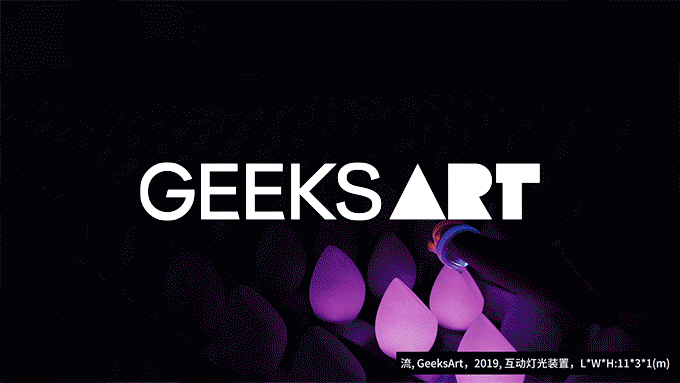项目综合一系列的意大利美食之旅:新鲜制作的意面餐厅、葡萄酒酒馆和食材市场。这三种活动像序列一样沿着主柜台开始出发,透明的意大利面实验室,顾客可以轻松看到意大利面制作全过程,从食材市场中拿起他们想吃的食物,或从货架上挑选葡萄酒。
The space responds to the request to create a contemporary and easy-going Italian eating place in Beijing, combining a series of very specific culinary experiences: fresh-made pasta restaurant, wine taverna and food market. The three aspects are declared along the main counter like a sequence, on which customers can find a glazed exposed lab where to see the process of pasta making, picking-up their dishes from food displays or choosing wines from shelves.
舒适的环境以清新的现代设计为特色,将南部意大利餐厅的温暖和欢乐与意大利北部“osteria”和葡萄酒酒吧的熟悉和亲密氛围相结合。配色方案遵循两个不同区域的功能划分,食品展示和厨房采用标志性的红色,与柔和细腻的灰色并列,以标记顾客的路径、用餐区、桌椅。内置家具、照明设备、标志和传统香草植物的墙壁手绘是专门为该空间设计的。来自西西里岛卡尔塔吉罗内的手工陶瓷工作室“Il Rustico”定制的盘子和陶瓷件被用于展示和墙壁装饰。陶瓷上面的图案和 V.I. 元素也成为了空间周围图案的灵感来源。
The cozy environment is characterized by a fresh modern design, which combines the warm and joyful brightness of South Italian restaurants with the familiar and intimate atmosphere of northern Italian “osteria” and wine pubs. Color scheme follows the functional division of two distinct areas, with a signature red color for food displays and kitchen, juxtaposed to a palette of soft and delicate grays to mark customers’ paths, dining rooms, tables and chairs. Built-in furniture, lighting fixtures, logo and wall decorations with traditional herbs are specifically designed for the space. Custom-made plates and ceramic pieces by “Il Rustico”, artisanal ceramic workshop from Caltagirone in Sicily, were used for decorating shelves and walls, and they were a further source of inspiration for graphics and V.I. elements around the space.
设计讲述了客户的故事和体验,这位年轻女士在意大利待了五年然后回到中国,遵循着她故事和需求,即拥有一个现代感的空间来传递她对意大利的热情食物和生活方式。
Design is somehow telling the story and direct experiences of the client, a young lady who spent five years in Italy before moving back to China, and it is following her tales and her original request of having a contemporary space where to transfer her passion for Italian food and life-style.
空间整体感融合了 900 年前早期传统意大利餐厅的元素,例如入口处的拱形天花板和装饰的纺织窗帘,以及 70 和 80 年代饮食文化的影响元素,大胆的红色使用。红色是餐厅的强烈视觉元素,让人想起意大利的时尚、华伦天奴或法拉利汽车等品牌,以及意大利西红柿等标志性产品。
General space feeling is merging elements borrowed from the traditional Italian restaurants from early ‘900, such as the vaulted ceiling and decorated textile curtains in the entrance, and the energetic effect of culinary culture of the 70’ies and 80’ies, with the use of bold red color. RED is a visually strong element of passion into the restaurant, which reminds to Italian fashion, brands like Valentino or Ferrari cars, and to iconic products like Italian tomatoes.
健康食物、慢节奏和质量生活也是餐厅概念引用的关键点。通过与来自西西里岛的手工工作室“il Rustico”的合作,意大利产品和手工风格被运用到空间中,该工作室设计传统的陶瓷盘子,这些陶瓷盘子是视觉识别、菜单和标志的灵感元素。来自历史品牌 Imola 和 Sant‘Agostino 的瓷砖被用于墙壁和地板,用来划分酒吧区和餐厅地面。 RAMOPRIMO 工作室设计师们自己手工绘制了超大的香草,将其印在中国宣纸上并装饰玻璃面板挂在墙面上。所有桌子、沙发、椅子和吊灯都是专门为该项目设计和定制的。
Healthy food, slow living and quality were also key points to be quoted in the concept for the restaurant. Italian products and an artisanal touch have been added to the space by inaugurating a collaboration with artisanal workshop “il Rustico” from Sicily, that was designing traditional ceramic plates, which were inspiring elements for visual identity, menus, and logo. Tiles from historical brands Imola and Sant’Agostino are used on walls and floor, to define the long bar areas and the dining floor. RAMOPRIMO designers themselves were painting by hand over-scaled aromatic herbs from the garden, to be printed on Chinese rice paper on walls and to decorate glass panels. All tables, sofas, chairs, and lighting chandeliers are specifically designed and custom-made for the project.
在主用餐区,色调是收敛和中性的,使用灰色混凝土地面和灰白色瓷砖,灰色调用于沙发上的灰色织物和所有木质桌面。一个大型酒架包裹着房间中央的墙壁,成为一个骨干元素,给顾客带来温暖的感觉,特别是在夜晚。其他区域提高较低的桌子,和更适合社交的较高桌子,客人可跟喜好选择;酒架前放着一张带高脚凳的长长的公共餐桌,五盏大型织物吊灯用特殊的桌子架在中央用餐区之上。长柜台包含所有酒吧和服务功能,运用红色成为整个空间的特色。它为从不同侧面进入的顾客提供了餐厅的视觉背景。角落里的玻璃房间意面实验室,新鲜面食的制作过程暴露在大家视野中。可调光照明系统照亮整个空间,全天营造出多样的氛围。
In the main dining area, color tones are controlled and neutral, with a use of grey concrete floor and grey-white tiles, grey tones of fabric on sofas and solid wood for all tabletops. A large wine rack is wrapping the wall in the center of the room, becoming a back-bone element suggesting a warm feeling to customers, especially in the evening hours. Lower and higher tables are offered to invite customers to choose their favorite seating spot; a long community table with high stools is placed in front of the wine shelves and large fabric chandeliers are surmounting five special tables in the central dining area. The long counter is containing all bar and service functions, characterizing the whole space with its red color. It offers the visual background of the restaurant for customers entering from different sides. A glazed room in the corner contains the Pasta Lab, where the process of fresh pasta making is exposed to the view. A dimmable lighting system illuminates the space to create diversified atmospheres throughout the day. The restaurant is facing a hidden patio on its western side.
餐厅的西侧面向一个隐藏的庭院。室外空间设有一个红色的双层混凝土平台,配有小桌子和坐垫,提供了休闲就餐场合来使用。
The restaurant is facing a hidden patio on its western side. The outdoor space features a red double leveled concrete platform with small tables and pillows for informal seating.
项目信息——
项目名称:SìPASTA色意面餐厅
设计年份:2022年
项目地点:北京,亮马桥盛大峰会
功能:餐厅
面积:300 平方米
设计方:RAMOPRIMO 设计
设计师:Marcella Campa, Stefano Avesani
设计团队:赵心怡、Giacomo Squaquara、王雯雯、杜华钰
家具:RAMOPRIMO、干草
瓷砖和陶瓷:IMOLA、Ceramica Sant’Agostino、Il Rustico Caltagirone。
客户:Si.Buono 集团
摄影师:Marcella Campa
Projcect Information——
name:SìPASTA restaurant
year:2022
location:Beijing, The Grand Summit Liangmaqiao
function:restaurant
area:300 m²
design:RAMOPRIMO
architects:Marcella Campa, Stefano Avesani
project team:ZhaoXinyi, Giacomo Squaquara, WangWenWen, DuHuayu
furniture:RAMOPRIMO, Hay
tiles and ceramics:IMOLA; Ceramica Sant’Agostino; Il Rustico Caltagirone.
client:Si.Buono group
photographer:Marcella Campa











































